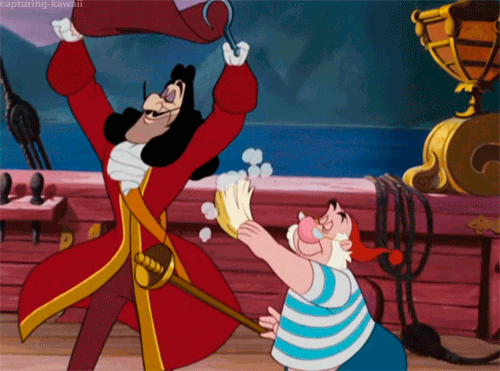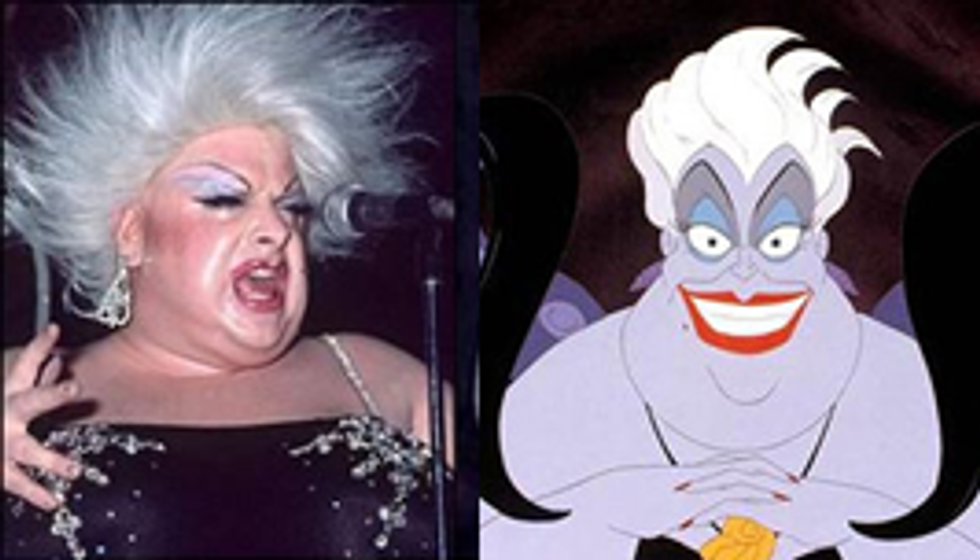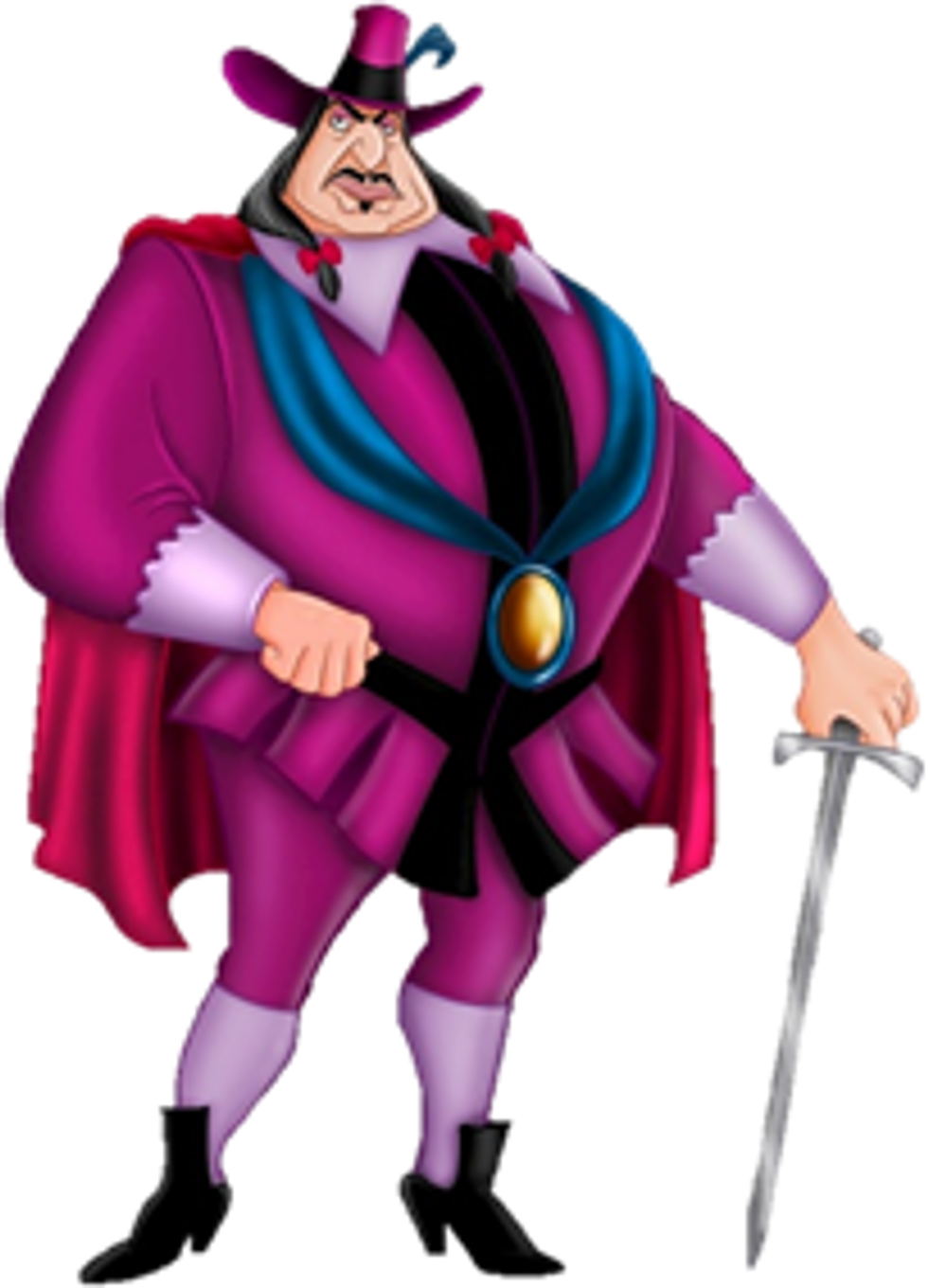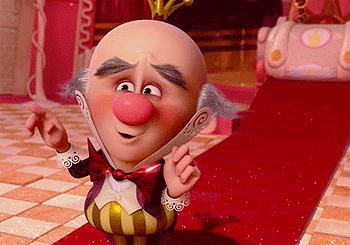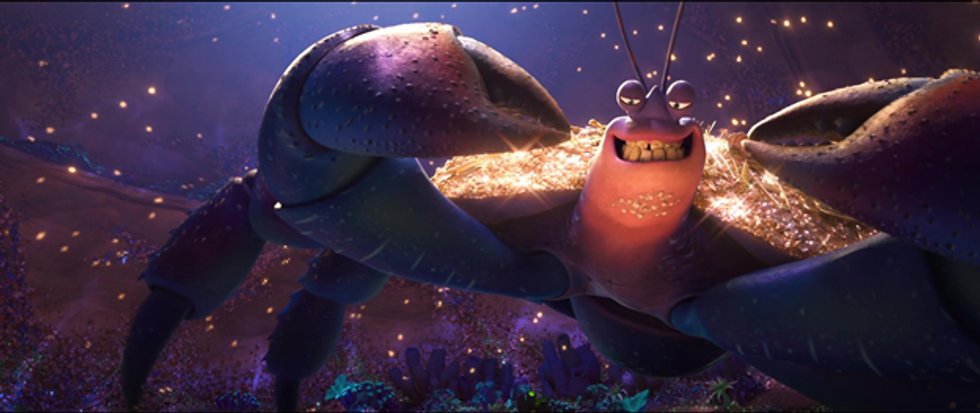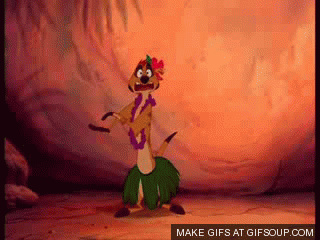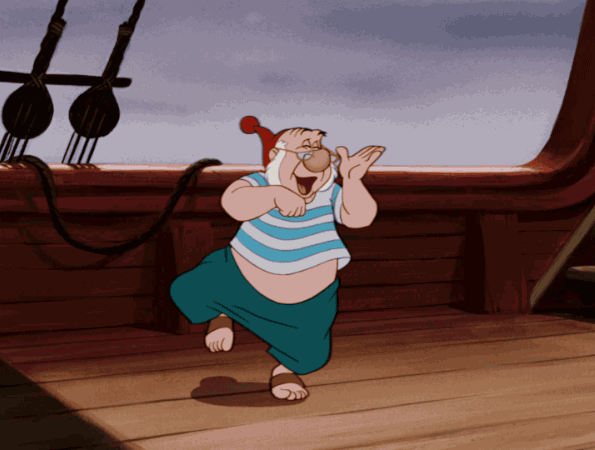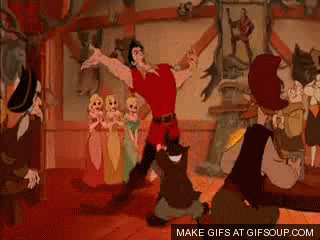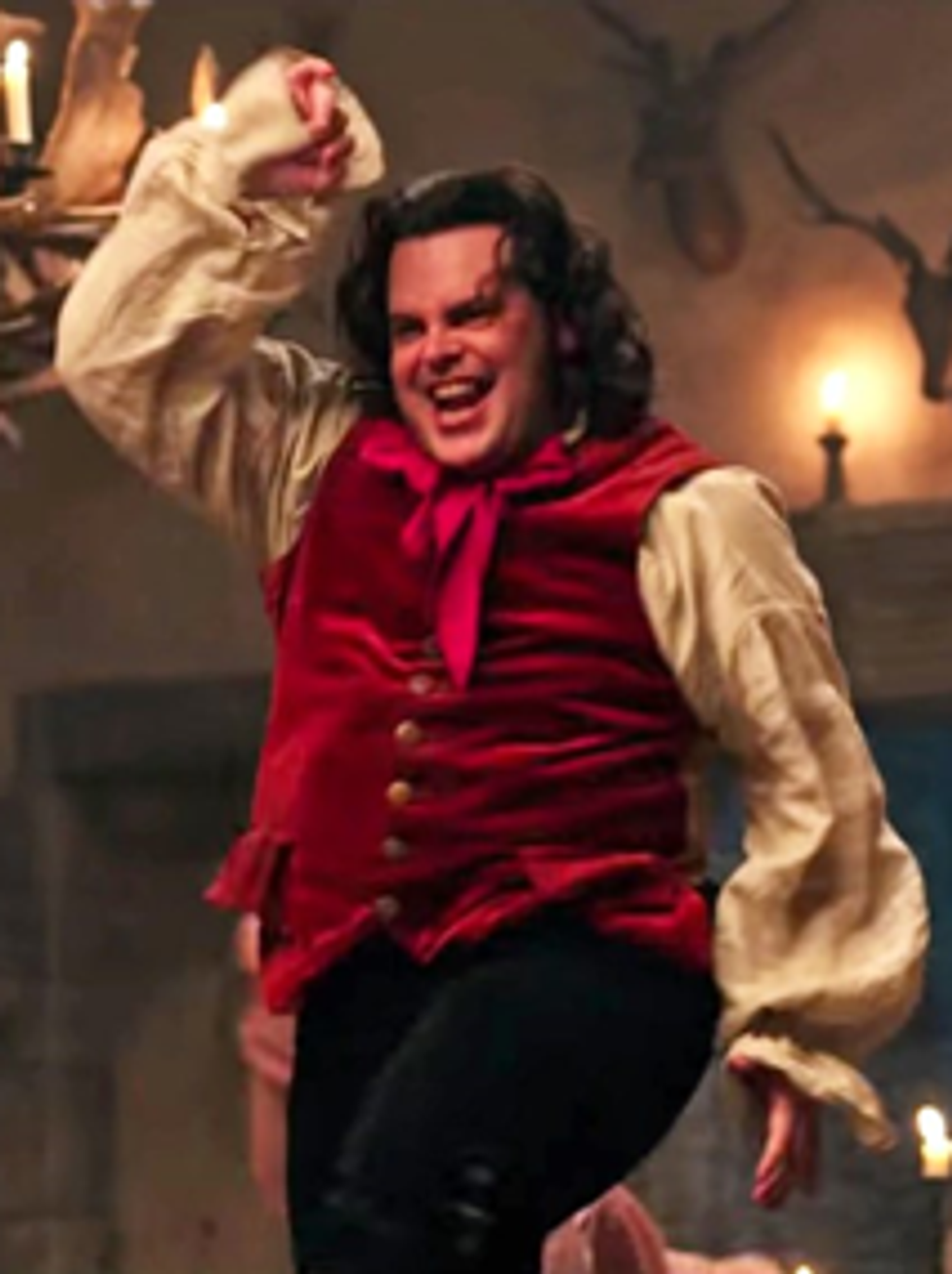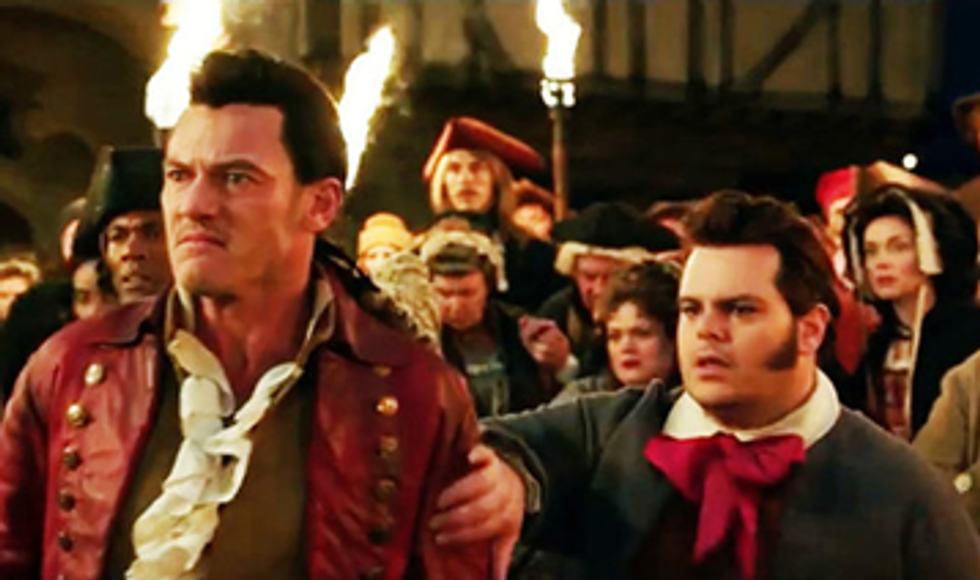Recently, Disney has gotten a lot of attention for its most recent production, Beauty and the Beast. The live-action remake was said to feature Disney’s first openly gay character – LeFou, Gaston’s sidekick. “LeFou is somebody who one day wants to be Gaston and on another day wants to kiss Gaston,” mentioned the director, Bill Condon, in an interview with Attitude magazine. This revelation sent the whole internet into a frenzy, with many rejoicing at the possibility of representation and some complaining about Disney’s “gay agenda.”
Disney has had a long, sometimes complicated history with using gay or effeminate characters in their movies. For a long time, “gayness” was a stereotype that they pushed onto villains to make them seem “eviler,” or used as comic relief, as was the case with the original 1991 version of LeFou. But recent movies, like Frozen and Zootopia, have shown that they’re moving away from their poor track record of fairly representing the LGBT community. And while it may have been a somewhat cautious step in the right direction, the progression of LeFou’s character from the original comic relief trope to the newer, more humanized version is important in the fight for fair representation of the LGBT community in the media, and shows that Disney is helping to repair their own broken track record with this issue.
When Disney was first starting out, they played around a lot with gender stereotypes, especially with the more effeminate male character. Animated shorts like Ferdinand the Bull and The Reluctant Dragon both featured male characters who didn’t act in accordance with the typical “masculine” gender norm. But these characters were treated in a positive light. In the early days of film, even outside of animated movies, “queer” characters – those who were ambiguously portrayed as homosexual or living outside gender norms – were seen as comedic. However, with the introduction of the Hays Code in 1930, these same characters were portrayed in a different light.
The Motion Picture Production Code of 1930, or the Hays Code, established guidelines that movies needed to follow. These rules were made with the intent to make sure that movies adhered to moral guidelines, many of these dealing with sexual activity. “Sex perversion or any inference to it is forbidden.” “Law, natural or human, shall not be ridiculed, nor shall sympathy be created for its violation.” Until it was replaced with the MPAA ratings system in 1968, this code governed the production of film and drastically changed the way that “queer” characters were presented. What was once portrayed as silly and funny was now cast in a more nefarious light.
In the 1950s, PSAs were shown in schools warning young boys of the “homosexual predator.” Boys Beware, intended to be an educational film, claimed that gay men preyed on young boys in public restrooms and public parks. “He may appear normal, and it may be too late when you discover he is mentally ill,” declares the PSA. Homosexuality was considered a mental illness, and the public’s view of gay men was that of a villain or a monster; films followed that pattern by making their villains more effeminate and “queer."
Disney, perhaps somewhat surprisingly, was one of those films. In Peter Pan, the main antagonist, Captain Hook, was modeled to reflect the “homosexual predators” in Boys Beware. Hook dons bright pink trousers and a matching hat topped with a large, over-exaggerated feather. He speaks with a lilting English accent, not to mention he is constantly yelling for his right-hand man, “Smee!” And his character literally preys on young boys. Towards the end of the movie, Hook tries to force the Darlings and the Lost Boys to join his crew in the song “The Elegant Captain Hook.” “There isn’t a boy / Who won’t enjoy / A-workin’ for Captain Hook,” sings the crew to the prisoners. Hook adds his offer: “All those who sign without delay / Will get a free tattoo.” “C’mon, join up, and I’ll be frank / Unless you do, you’ll walk the plank!" During the song, the crew dances and twirls with each other around the ship. The men could have easily been portrayed as brutish, masculine pirates, but Disney’s direction choice to have them flamboyantly twirl and waltz on the deck is a more than obvious hint towards homosexual undertones. With the public’s attitude toward homosexuals at the time, and considering the Boys Beware PSA shown to young boys, this song – and Hook’s character – can have little other meaning. Disney portrays Hook as a homosexual pedophile trying to enlist the young boys in his “crew.”
Captain Hook was not the first, nor last, Disney villain to be portrayed as both evil and “gay.” Even Ursula, the sea witch from The Little Mermaid, was based off of the real-life drag queen Divine. In many of its early male villains, Disney made use of the “fop” stereotype. Merriam-Webster defines a fop as “a man who is devoted to or vain about his appearance or dress; a dandy.” There were many characteristics subconsciously associated with gay men that Disney was able to sneak in. Captain Hook, Professor Ratigan from The Great Mouse Detective, Governor Ratcliffe from Pocahontas, Frollo from The Hunchback of Notre Dame, and Jafar from Aladdin were all donned in varying shades of pink or violet. We can add in Sher Kahn from The Jungle Book, Prince John from Robin Hood, Hades from Hercules, and Scar from The Lion King into this group of “crypto-homo” villains, as they all shared similar characteristics in their speech and personalities. David Thorpe, the director of the documentary Do I Sound Gay?, examines the “gay voice” and different characteristics that make these villains a little off-putting and antagonistic.
“For decades, Disney films have reinforced the stereotype that gay men are bad because not only do they scheme and enact mischief upon the good characters, but they are also bad because they don’t conform to cultural norms of gender. The men are flamboyant. They use flowery language. They have a very snobbish way of speaking. They’re often very fastidious and pay a lot of attention to how they dress. They are a cartoon, both literally and metaphorically, of what gay men are.” With this in mind, it’s easy to see a pattern in Disney’s early villains. Nearly all of them conformed to this stereotype, and whether or not it was Disney’s intent to use “gay” traits to “villainize” their villains, it worked. In the time period in which these movies came out, those who differentiated themselves from the gender norm were considered queer and off-putting, and the homosexual man was the villain in real life. Putting homosexual traits in subtext only helped to make their villains more “evil.”
Even in more modern films, slick, debonair, violet-clad villains like Dr. Facilier from Princess and the Frog still make an appearance. King Candy from Wreck-It-Ralph was the last such instance of the effeminate villain, and Disney pulled out all the stops with his character. He bore a striking resemblance to the Mad Hatter from Alice in Wonderland, sporting an oversized red bowtie, puffy gold-striped pants, rosy cheeks, purple, pointy-toed slippers that jingle as he walks, and a tall lacy collar resembling a doily. His squat stature is supported by a candy “cane” that he holds with a dainty wrist, and his flowery, overly effeminate, and mildly childish personality top it all off. When someone called the inside of his castle pink, he hastily corrected them by claiming it to be “obviously salmon.” At one point in the movie, our protagonist Ralph even refers to him as a “nelly wafer." “Nelly” is an outdated slang term used negatively to describe effeminate homosexual men. Clearly, Disney got away with a lot in the making of his character, and still used the old tactic of injecting a villain with a little homosexual flair; or in King Candy’s case, dousing him with the whole bottle before throwing it away.
While some might argue that Disney’s newest animation, Moana, also made use of the “foppish” villain through the glittery, egocentric crab Tamatoa, it turns out that there is a reason behind Tamatoa’s queer attributes. Tamatoa’s obsession with all things shiny, as well as his tribute to them in his eerily eccentric, glam-rock song “Shiny,” is actually a tribute to the late David Bowie. This movie was written at a time when the world was still grieving for the legendary Bowie, and Tamatoa’s character was to be voiced by Jemaine Clement, who was “a man known for his spot-on Bowie impression.” Tamatoa might appear at first to be nothing more than another villain who was given effeminate features to make him scarier, but all of the glitter and graceful sashaying during his musical number was actually a reference to David Bowie – who was, regardless of his sexuality, very prominent in LGBT culture.
Disney also used some gay stereotyping in its comedic relief characters. Genie from Aladdin and Pleakley from Lilo and Stitch both frequently dress in drag throughout the course of their respective movies. Timon and Pumbaa from The Lion King also play with homosexual subtext with references to same-sex parenting and drag (“What do you want me to do? Dress in drag and do the hula?”) while providing the movie’s jokes and most memorable song, “Hakuna Matata." Hugo the gargoyle, from The Hunchback of Notre Dame, starred as the main comedic relief to a much more dark and serious movie. While the other gargoyles seemed to be focused on Esmeralda when talking about Quasimodo’s love interest, Hugo focused his affections towards Esmeralda’s male goat, Djali. In the substantially less popular sequel, Djali appears to reciprocate Hugo’s affections – meaning that Disney’s first gay “relationship” would have been between a gargoyle and a goat. Not to mention that goats are typically viewed as demonic or Satanic in nature – having a gay “relationship” involving a goat could be Disney’s way of demonizing gay relationships.
Many of these characters were the right-hand henchmen to their foppish antagonists, such as Smee in Peter Pan and Wiggins in Pocahontas, who, ironically, was voiced by David Ogden Stiers, the voice of Governor Ratcliffe. They were generally portrayed as obediently and unconditionally serving their superiors, with little to no character development of their own. Their whole purpose in the movie was to attend to their respective villain hand and foot, without complaint or moral qualms, and to provide comic relief: often by being the preferred outlet for their villain’s anger with the protagonist.
The most famous example of such a character is LeFou, Gaston’s fawning sidekick in Beauty and the Beast. Besides his constant, unconditional attention given only to Gaston, LeFou flamboyantly prances and twirls around while singing a jaunty tavern number extolling Gaston’s virtues. This song was filled with thinly veiled homosexual references. “For there’s no man in town half as manly / Perfect, a pure paragon!” LeFou acclaims. “You can ask any Tom, Dick, or Stanley / And they’ll tell you whose team they’d prefer to be on!” ‘Team’ is often used to reference one’s sexual orientation, therefore, LeFou is suggesting that Gaston’s manliness is strong enough to attract any guy. Further, the majority of LeFou’s lines in the song refer to Gaston’s physical appearance, while the other men in the tavern sing only about his wit or his skills. LeFou’s attention to Gaston’s physique is joined only by the accompanying women in the tavern. “No one’s neck’s as incredibly thick as Gaston’s!” “Not a bit of him’s scraggly or scrawny,” “No one’s got a swell cleft in his chin like Gaston!” LeFou even tickles his chin during this line, and is very touchy-feely with Gaston throughout the song, holding on to his arm and even swinging from his neck by a leather belt. At the end of the reprise, LeFou waltzes out of the tavern arm-in-arm with Gaston.
LeFou’s character is meant only for comic relief, as he often bears the brunt of Gaston’s temper tantrums by getting banged on the head or thrown into mud puddles. At one point in the original movie, Gaston actually leaves LeFou in a snowbank to wait for Belle to return. LeFou still worships Gaston throughout the movie despite his physical abuse, which doesn’t paint a pretty image for his character. He is less of a human character than a humorous footstool who willingly serves Gaston – in fact, his name in French literally means, “the fool.”
It turns out, however, that the 1991 making of Beauty and the Beast was involved with more LGBT issues than the homosexual allusions in “Gaston.” Howard Ashman, who was involved in writing the lyrics for the movie along with Alan Menken, was suffering from AIDS during the time. However, due to the public’s wary view of the disease, and of gay men, at the time, Ashman ended up suffering in silence. He used the character of the Beast as a way to portray his pain as he dealt with HIV. Before his involvement, the story had mostly focused on Belle – however, he brought the Beast into the spotlight as another central character. Ashman used the Beast’s self-hatred towards the curse placed upon him as parallel to what he was dealing with personally at the time with AIDS. Songs like “The Mob Song,” which featured the angry villagers venturing off to “kill the beast,” showcased the public’s view towards the disease and homosexuality in general. “We don’t like what we don’t understand / In fact it scares us / And this monster is mysterious at least,” they chant, wielding torches and pitchforks.
Bill Condon, the director for the live-action remake of the movie, talked more about Ashman in an interview. “Specifically for him, it was a metaphor for AIDS. He was cursed, and this curse had brought sorrow on all those people who loved him, and maybe there was a chance for a miracle – and a way for the curse to be lifted.”
Despite its criticisms, and perhaps with Ashman’s huge influence still in mind, the 2017 remake of Beauty and the Beast was revolutionary for the LGBT community in many ways. Bill Condon is gay, as are Luke Evans, who plays the character Gaston, and Ian McKellen, the voice of Cogsworth. Belle is played by Emma Watson, a revolutionary, progressive figure for feminists as well as a supporter of the LGBT community. And within months of the movie’s first debut, Bill Condon announced that the movie would feature Disney’s first “exclusively gay moment,” with LeFou being Disney’s first openly gay character.
Public backlash commenced, but was drowned out by the overwhelming support of those who were anxious to see Disney finally make a leap in the right direction in supporting the LGBT community. Disney had been including small hints towards supporting the LGBT community in its more recent animated films: in Zootopia, Officer Judy Hopp’s neighbors are a gay antelope couple – this fact was only revealed in the credits, where their names appeared with the surname “Oryx-Antlerson." Finding Dory gave viewers a brief second of what appeared to be a lesbian couple, not to mention having its main character, Dory, voiced by none other than Ellen DeGeneres, one of the most prominent LGBT icons in the world. The movie Frozen also included a gay “Easter-egg” in the movie: when the owner of Oaken’s Trading Post waves to his family in the shop’s sauna, a man and four children wave back. Frozen’s Elsa also provided the movie with small hints towards the LGBT community, with no male love interest in sight and her feature song “Let It Go,” which presented themes of being who you are and letting go of what other people want you to be – which could have been a friendly nod towards the LGBT community. Until the release of Beauty and the Beast almost four years later, Frozen was seen as Disney’s most LGBT-friendly film.
The character of LeFou in the live-action Beauty and the Beast made huge improvements upon his predecessor. For starters, his appearance and personality wasn’t overly comedic, although his role as comedic relief was still in place. We see a return of the “pink villain,” as LeFou now dresses in a bright shade of hot pink. However, LeFou is no longer portrayed as the subservient, fawning henchman. Instead, he appears to be Gaston’s close friend, riding alongside him as an equal and supporting him in his endeavors. But while the old LeFou had no moral dilemmas when helping out his idol, the new LeFou seems to hesitate as Gaston grows increasingly persistent in his attempts to win Belle in marriage. When Gaston ties up Maurice, Belle’s father, in the woods, leaving him to the wolves, we see LeFou’s unwillingness to comply as he tries to reason with Gaston – and as they drive off, he looks back regretfully at Maurice. When Gaston later claims that he had no part in trying to kill Maurice, LeFou agrees with him only after a long period of tripping over his sentences and obviously arguing with himself as he begins to face a serious moral dilemma. In “The Mob Song,” LeFou watches Gaston worriedly as he sings, “There’s a beast running wild, there’s no question / But I fear the wrong monster’s released.” During the final battle at the castle, LeFou ends up having a grand piano fall on him. But while he yells for Gaston to help him, Gaston simply ignores him as he goes off to find the Beast. LeFou ends up saving Mrs. Potts, explaining that “Well, I used to be on Gaston’s side, but we are so in a bad place right now.” Mrs. Potts responds by saying “You’re too good for him, anyway,” to which LeFou nods in agreement, and joins the castle’s inhabitants in fighting off the villagers. And in the very last scene of the movie, where all of the characters are dancing happily, we get to see a man waltz into the arms of a slightly surprised LeFou – the same man who, in the battle against the castle’s inhabitants, had been dressed in a female costume by Madame Garderobe and smiled at his reflection, sashaying away while his two companions, dressed in similar clothes, screamed in terror and fled.
Even with all of LeFou’s improvements, there was still critics who claimed that the new Beauty and the Beast did little, if anything, to improve Disney’s relations with the LGBT community. Many were severely disappointed with the minute amount of attention given to the “exclusively gay moment” – which turned out to be the three seconds of screen time given to LeFou and his male dancing companion. It’s true that this might have been an overcautious gesture, and it definitely didn’t live up to all of the hype it had been given. But what these critics fail to consider is the significance of all of the changes given to LeFou’s character. He now has character development. He has a conscience. He might have been comic relief, but his attributes weren’t ridiculed as they were in the original story. He wasn’t the next “gay villain.” He was a complex character who was Gaston’s comrade, not his footstool. And when he realized that Gaston was only using him for an ego boost, he did the right thing and left, instead of staying in what was ultimately a toxic, one-sided friendship. In fact, he wasn’t even portrayed as being “madly in love” with Gaston. Their time on screen resembled more of a brotherly relationship than anything – save for a scene that was nothing more than a comment towards LeFou and Gaston’s closeness during a scene in the song Gaston, in which LeFou wraps Gaston’s arms around him (“Too much? Yep.”). He might have been the first openly gay Disney character, but his sexuality had nothing to do with his story or his part in the movie, which is an important milestone not only for Disney, but for films in general in their depiction of LGBT characters.
LeFou’s character was by no means the perfect representation of gay men. However, his significance lies in the changes that were made in his character, and what the presence of such changes means for the future of Disney and their approach to gay characters. Considering that Disney has a wide fanbase made up of both progressive outlets calling for more rapid change, and conservative outlets complaining about the pace of change, Disney made a gamble when they went public with LeFou’s sexual orientation. The fear of losing loyal fans and, therefore, losing money, is what has kept the animation monolith from being too out in the open with their new, LGBT-friendly decisions. The move could have lost them a considerable profit margin if too many were opposed to a new, more progressive Disney. But the considerable success of Beauty and the Beast will certainly pave the way for much bolder action on their part. Worldwide, the movie has claimed over $1 billion dollars in box office sales, as well as the number one rank domestically for the first two weekends it premiered. Clearly, the world is ready for such change.
The new Beauty and the Beast might have been a cautious step towards fairly representing LGBT characters, but it was certainly a step in the right direction. Considering all of Disney’s past history with LGBT characters, and seeing how their more modern movies are starting to include small hints of a friendlier outlook towards the LGBT community, Beauty and the Beast was a landmark decision that will certainly pave the way for increasingly bold and progressive decisions by the animation monolith. Gone are the days of using “gayness” as a way to portray villains or provide comic relief. Instead, in LeFou we see a fully fleshed-out, human character who develops throughout the course of the story. LeFou’s character shows that Disney is willing to progress, and we can only hope that in the future, Disney will lead the way in continuing to include LGBT characters that are just as human as the rest of us.


